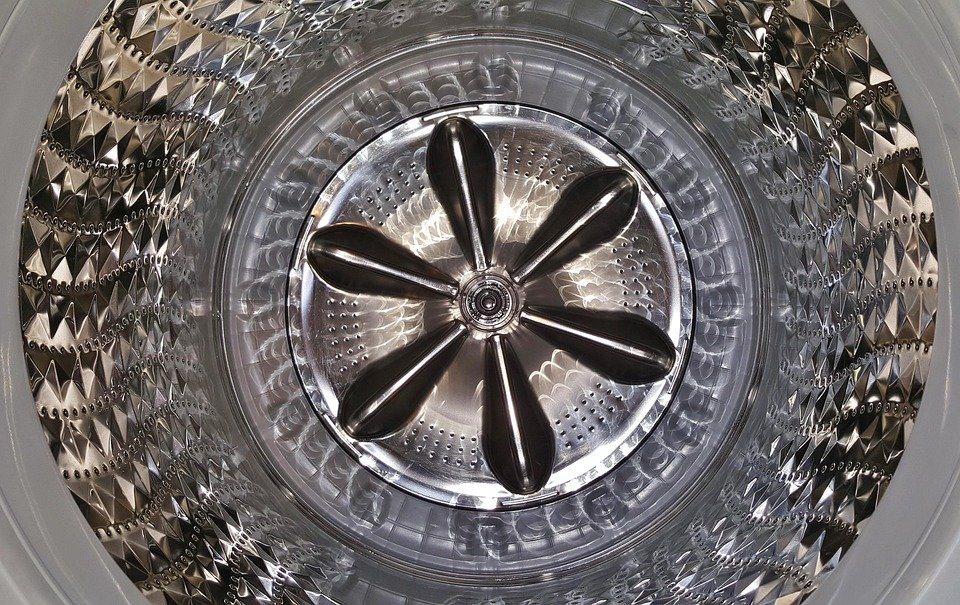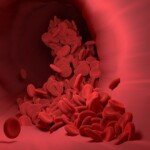Uncovering the Mystery of the Electric Room: Basics of Vertical CNC Milling Machines
In the world of precision manufacturing, few machines are as common and universal as vertical CNC milling machines (VMCs). From prototype studios to large-scale production lines, this is the main force of countless mechanical workshops. Whether you are evaluating the process of your next project or how metal parts are born, it is crucial to understand the basics. Let’s dig into the core principles that make VMC check.
Core concept: Vertical orientation is key
As the name implies, the definition function of VMC is Vertical spindle direction. The cutting tool rotates on the direct vertical axis above the workpiece. The workpiece itself is securely sandwiched against a table that moves primarily in the horizontal plane (x and y axes), while the spindle head moves vertically (z axes). This configuration is significantly contrasted with its cousin’s horizontal machining center (HMC), which is located horizontally.
Anatomy of standard VMC:
- Basics and columns: Heavy, rigid foundation supports the entire machine and suppresses vibration. The column rises vertically from the base, which is composed of the mechanism of Z-axis movement.
- knee: The knees are found on some older or simpler designs, moving vertically along the cylinder (z-axis) with saddles and tables. Many modern VMCs use a fixed table and then move the entire spindle head/quill to the Z axis.
- saddle: The saddle is mounted on the knee or directly to the base structure, moving linearly along the X-axis (front to back).
- table: The table is mounted on the saddle and moves linearly along the Y-axis (from left to right). It has T-slots that directly clamp the workpiece or T-Slots for mounting lamps, fixtures or rotating tables. Labor is crucial for accuracy and safety.
- Spindle head: Located at the top of the column. It contains:
- Spindle: High-precision rotating shafts directly fix cutting tools (via tool holders such as collet clips, end mill brackets or hydraulic/pneumatic chucks).
- Spindle motor: Provides rotational power (measured in RPM -RPM – per minute or KW).
- quill: (On some models) the telescope section of the spindle head, which allows fine vertical adjustment of manual or power to be separated from the main Z-axis motion.
- Tool changer: The basic characteristics of most modern CNC VMCs. Automatic shifters (ATCs) (usually carousel, arm or turret styles) store multiple cutting tools and automatically switch them to spindles during programming, allowing complex operations without manual intervention. Tool capacity ranges from 10 to 60 or more tools.
- Control system (CNC controller): this "brain" machine. It can interpret G-code or M-code instructions, precise control table (X, Y), spindle head (Z), spindle rotation (S), coolant flow and tool changes movement. Popular brands include Fanuc, Siemens, Haas and Heidenhain.
- Coolant system: Cycling the fluid to:
- Keep tools and workpieces cool to prevent damage.
- Lubricate cutting action to reduce friction and tool wear.
- Flush the metal chip (SWARF) from the cutting zone to ensure the finish and prevent re-recovery.
How it runs (basic machining process):
- design: The parts are designed using CAD (Computer Aided Design) software.
- programming: Use CAM (Computer Aided Manufacturing) software to convert CAD geometry into machine instructions (G code). This defines tool path, speed, feed, cutting depth, and tool changes.
- set up: The workpiece is securely secured to the machine tool. The correct tool is loaded into ATC. The CNC program is loaded into the machine controller.
- Processing:
- The operator starts the program.
- The controller commands ATC to load the first tool.
- The spindle accelerates to the programmed RPM.
- The table and spindle head move, positioning the rotation tool as the workpiece indicated by the program.
- The tool is engaged with the material and removes the chip according to the defined tool path (profile, bagging, drilling, face, slots, etc.).
- ATC automatically changes the tool if necessary.
- Coolant is used continuously.
- This cycle continues until the program completes all operations.
- examine: Remove finished parts and check the accuracy of dimensions and finishes.
Key Benefits of Vertical CNC Milling:
- Accessibility and visibility: The top-down workspace makes setting easier, monitors the machining process and clearly sees the cutting action. Gravity evacuation is usually good.
- Setup simplicity: Fixing is usually simpler than HMC, especially for plate or cubic parts.
- Cost-effective: Typically, the initial cost of VMC is lower, the operating cost per cubic space (footprint), and the initial cost of HMC (footprint) makes many stores very easy to use.
- Multifunctionality: Ability to do a lot of operations – from simple drilling and knocking to complex 3D profiles. With 4-axis rotary tables, they can handle multi-faceted machining.
- Accuracy and repeatability: CNC controls have excellent accuracy and the ability to repeatedly produce the same parts.
- efficiency: Automatic changers greatly reduce non-cutting time and enhance throughput.
Limitations to consider:
- Chip evacuation on complex parts: Deep cavity or narrow angles can capture the chip and may hinder the tool.
- Workpiece dimension constraints: Despite large VMCs, machining very high or heavy workpieces can be challenging due to limited Z-axis travel and a large amount of fixtures required in vertical directions.
- One-sided dominance: Mainly suitable for machining the top and sides; access to the bottom requires re-fixing. The 5-axis machine overcomes this limitation more effectively (more on this later).
Applications are everywhere:
VMC is the basis for creating components:
- Aerospace (brackets, accessories, housing)
- Car (engine block/head [parts]transmission parts, suspension components)
- Medical equipment (implantation, surgical tools, equipment parts)
- Robot technology (weapons, joints, bases)
- Consumer Electronics (shell, radiator, connector interface)
- Molds and molds (core/cavity processing, electrodes)
- Defense, energy and countless other industries.
Beyond 3 Axis: 3+2 Power and Complete 5 Axis Machining
Although traditional 3-axis VMCs have incredible functionality, complex geometries often require greater flexibility. Multi-axis machining solves complex positioning challenges:
- 3+2 axis machining: Use a 3-axis VMC equipped with A Rotating table (usually the fourth axis, allowing rotation about the X or Y axis, sometimes the fifth axis curve). The shaft is rotated to locate the parts at a fixed angle, and the machine then performs a 3-axis milling operation on the faces in that direction. It greatly reduces the setup of multi-faceted parts, but does not involve complex movements simultaneously.
- Completely 5-axis machining: Coordinated motion involving all five axes (X, Y, Z and two rotation axes) at the same time. This unlocks unparalleled possibilities:
- Complex geometric surfaces: Sculpting complex organic curves (impeller, turbine blade, prosthesis).
- Undercut and depth features: It is impossible to process angles for 3-axis machines.
- Greatly reduced settings: Complete parts in complex geometry in a single setup.
- Top surface finish: Ability to maintain optimal tool contact angle and cutting speed on complex contours.
- Longer tool life and higher efficiency: Optimal tool orientation reduces tool deflection and vibration, allowing for higher feed rates.
Great Advantage: Improve accuracy with 5-axis expertise
exist GreatWe utilize the full range of CNC milling technology. While proficient in effective 3-axis VMCs to accomplish more direct tasks, our core strength lies in our advanced Five-axis CNC machining solution. We have invested heavily in cutting-edge 5-axis technology and refine our production process to address the most demanding metal parts manufacturing challenges.
Understanding the fundamentals of VMC allows you to appreciate the complexity involved. When your project involves:
- Complex geometric shapes beyond standard milling range
- Super tolerances on complex shapes
- Material requirements for optimal tool path strategy (exotic alloys, hardened steel)
- Reduce setup time and handling of multi-faceted parts
- Achieve high-quality surface finishes on free-form surfaces
…This is what Greatlight’s five-axis expertise becomes an essential asset for you. We combine in-depth engineering knowledge with state-of-the-art equipment to provide solutions for standard milling to reach its limits. In addition to processing, we also provide comprehensive One-stop post-processing and completion service (e.g., burrs, heat treatment, paints, surface treatment) has a truly seamless manufacturing experience.
Conclusion: An indispensable engine for modern manufacturing
Vertical CNC milling machines remain the cornerstone of precision manufacturing. Its combination of accessibility, versatility, accuracy and power has made it possible to create countless components that drive modern industries and technologies. From the basics of a 3-axis VMC to the advanced features of 5-axis machining simultaneously, understanding these technologies provides better decision-making for your project.
Regardless of whether the standard VMC is sufficient or requires complexity of versatile machining, it is crucial to choose a partner with the right expertise and technology. exist GreatWe focus on breaking through possible boundaries with advanced five-axis CNC machining. We are able to effectively overcome metal parts manufacturing challenges and provide extraordinary quality with end-to-end post-processing support.
Ready to turn your design into accurate reality? [Explore GreatLight’s 5-axis CNC machining capabilities and request a quote for your custom precision parts today, delivered at an exceptional value!] (CTA link placeholder)
Frequently Asked Questions about Vertical CNC Milling Machines (FAQs)
-
What is the difference between a CNC mill and a CNC VMC?
- CNC milling machine (or CNC milling machine) is a generalized term covering all computer controlled milling machines. CNC Vertical Machining Center (VMC) is Specific types Characteristics of CNC Mill Vertical spindle directionAutomatic Tool Changer (ATC), is usually a closed work area.
-
When should I choose VMC on HMC (Horizontal Machining Center)?
- Select a VMC: Easier setup/visibility, lower cost (especially for simpler parts), better accessibility to top/side features, suitable for board/cube workpieces, and versatility for many operations.
- Select an HMC: Superior chip evacuation (chip drop), easier large shaft parts (crankshaft, transmission) require multiple side operations, resulting in better stability in heavy-duty cutting due to low gravity.
-
What material is VMC machine?
- Materials for VMC are incredibly versatile. Common machining materials include: aluminum alloy, steel (gent, tool, stainless steel), titanium alloy, brass, copper, plastic (Delrin, Peek, nylon), composite materials, and even cemented carbide with appropriate settings and tools.
-
What is an automatic converter (ATC) and why is it important?
- ATC is a mechanism that automatically exchanges the spindle as indicated by the CNC program. This eliminates time-consuming manual tool changes, significantly improves productivity and allows complex parts that require manufacturing multiple different tools in a single setup.
-
How important is the stiffness of a VMC?
- Rigidity is The most important. Rigid machine frames, spindles and tool holders absorb cutting forces without significant deflection. This translates directly into accuracy (maintaining tight tolerances), better finish, less vibration (quiver), increases tool life, and allows for heavier cutting. Features such as Box-Day architecture contribute to rigidity.
-
What are cutting tools made of?
- Common materials include:
- High-speed steel (HSS): Tough, versatile, relatively cheap. Suitable for slower speeds and intermittent cuts.
- Strong carbides: Very hard, performs well on high speed/feed, with excellent wear resistance and rigidity. Usually used in end mills. More crisper than HSS.
- Carbide Insert: A replaceable cutting tip made of carbide, ceramic, Cermet, Cutic Boron Nitride (CBN) or PolyCrystalline Diamond (PCD). Mounted on a steel rack, the insert can be replaced only when worn. Provides cost-effective high-performance cutting.
- Common materials include:
-
What is it "Speed and feed"?
- These are the key machining parameters controlled by the CNC program:
- Speed (surface speed/SFM/m/min): How fast edge The track of the cutting tool passes through the workpiece surface.
- Spindle speed (RPM): The rotation speed of the spindle (derived from the required surface speed and tool diameter).
- Feed rate (IPM/mm/min): How fast does the tool move pass Material.
- Feed per tooth (FPT): How much material is removed at each tip of each revolution (the key to calculating feed rate).
- Optimizing speed and feeding is critical to tool life, finish, cycle time, and preventing tool or part damage. They depend to a lot on the tool material, workpiece material, depth/width of the cut, machine stiffness and coolant.
- These are the key machining parameters controlled by the CNC program:
-
How to improve 5-axis machining on standard 3-axis VMC?
As mentioned in the blog, 5-axis (especially simultaneously) allows for geometrically complex parts or efficient efficiency on 3-axis machines. Key benefits are: machining complex profiles/undercuts, highly accurate positioning, reduced settings (single set parts), improved tool life with optimal orientation, better surface finish, and shorter tool access.
-
Why choose Greatlime for my CNC milling needs?
- Advanced Technology: We invest in state-of-the-art 5-axis CNC equipment to maximize our function.
- Deep expertise: Our team has engineering knowledge to solve complex manufacturing challenges.
- Material mastery: Extensive experience in processing various metals and alloys into strict tolerances.
- Comprehensive service: Provides machining and crucial one-stop post-processing/finishing for seamless production.
- Speed and value: Focus on effective production and competitive prices without compromising quality.
- Key points of solving problems: Professionally meet challenging parts requirements.
- Is Greatlight’s services suitable for prototypes and large-scale production operations?
- Absolutely. Our advanced 5-axis VMC capabilities perform well in efficiently producing complex prototypes in small batches, allowing thorough testing and improvements. Similarly, we are preparing and experience to handle greater throughput using strict quality control and process optimization to ensure consistency and meet delivery schedules.


















